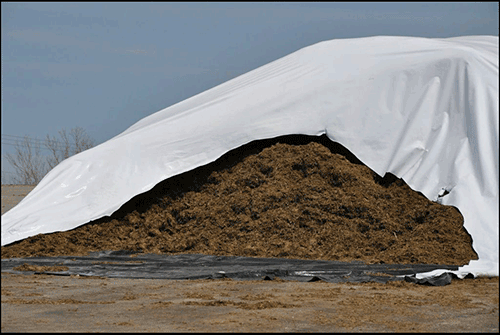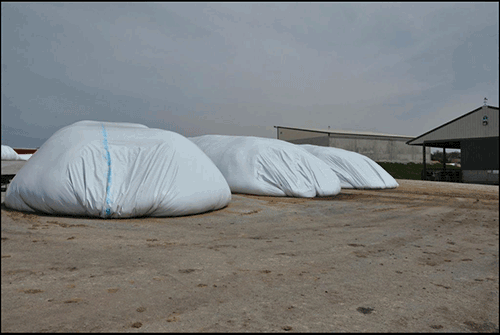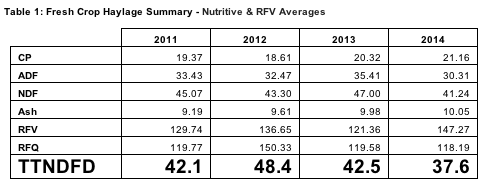
The summer of 2014 is going down in the books as an interesting one, including the volatile haylage season. In some cases, this year's crop saw its start under intense rainfall - making harvest difficult at the ideal plant maturity. Dryer conditions in July have followed. But what are the resulting forage quality aspects now that the first and second crops are off the ground?
"Since samples started arriving at our lab in mid-May, we've seen overall decreased haylage quality as compared to both 2012 and 2013 crop years, although variability remains high," explains John Goeser, Animal Nutrition Director for Rock River Laboratory. "On average, we're seeing less fiber, meaning higher Relative Feed Value (RFV), and more protein packed into the silos, which typically would suggest better forage quality."

However, Goeser cautions that the RFV will fool producers this year. He goes on to explain that while some people are reporting better quality, the averages seen in the laboratory show an overall poor quality trend. Relative Feed Quality (RFQ), which is a better measurement of forage quality than RFV, dropped in 2014. Even more disappointing is the marked quality decrease shown through Total Tract NDF Digestibility[1] (TTNDFD) analysis - a tool that describes digestion better in relation to the cow than RFQ.
TTNDFD builds upon NDFD, RFQ and RFV by combining quality components and offering a value for the fiber availability during its time in a high producing cow's rumen. This tool can predict forage performance through the rumen with a dynamic and validated look.
"The down trend in haylage quality was so substantial this year that a subset of first crop legumes and mixed forages were run through the TTNDFD analysis via wet chemistry, validating and offering resounding proof of the diminished quality trend in quality on average this year," says Goeser.

TTNDFD predictions on the initial haylage samples we analyzed were coming in around 40 percent. Goeser explains that typically a high-quality crop should run a value around 48 to 60 percent. Each several unit drop in TTNDFD can be attributed to a pound decrease in animal milk performance, if feeding substantial amounts of that forage in the diet.
Table 1 showcases a summary of nutritive and TTNDFD averages for this year and past years (Rock River Laboratory, Inc. data, unpublished) supporting Goeser's team's findings.
What attributes for the season lead to this decreased quality? Experts cannot pinpoint the drop in quality on weather or other growing or harvesting conditions. While producers may have missed optimal quality with first and second crop, there is no better time than now to be more proactive.
Goeser advises not to base the harvest timeline on the calendar. "The best means to harvest an optimal crop is to work with your consulting team and monitor plant physiology and plant maturity early in the season, or beginning around 17 to 21 days post-cutting. Then base your harvest plans on plant maturity rather than following an every 28 to 30 day harvest schedule," explains Goeser. "Genetics have advanced, and the environment has been so variable that in some cases harvest should be much earlier than 28 days post-cutting."
The variability noted this year combined with complexity evolving with this situation makes it difficult for some producers who are already feeding this year's haylage. "Ultimately, feed quality should be measured and monitored while feed is coming into the silo so that consultants and producers have some idea of what forage quality will be," says Goeser. "Then, based on that information or forage quality results at feed out, strategies such as bringing more digestible NDF into the TMR or improving diet NDFD can be applied to deal with resulting poor quality and avoid animal performance slumps."

8.4.2014